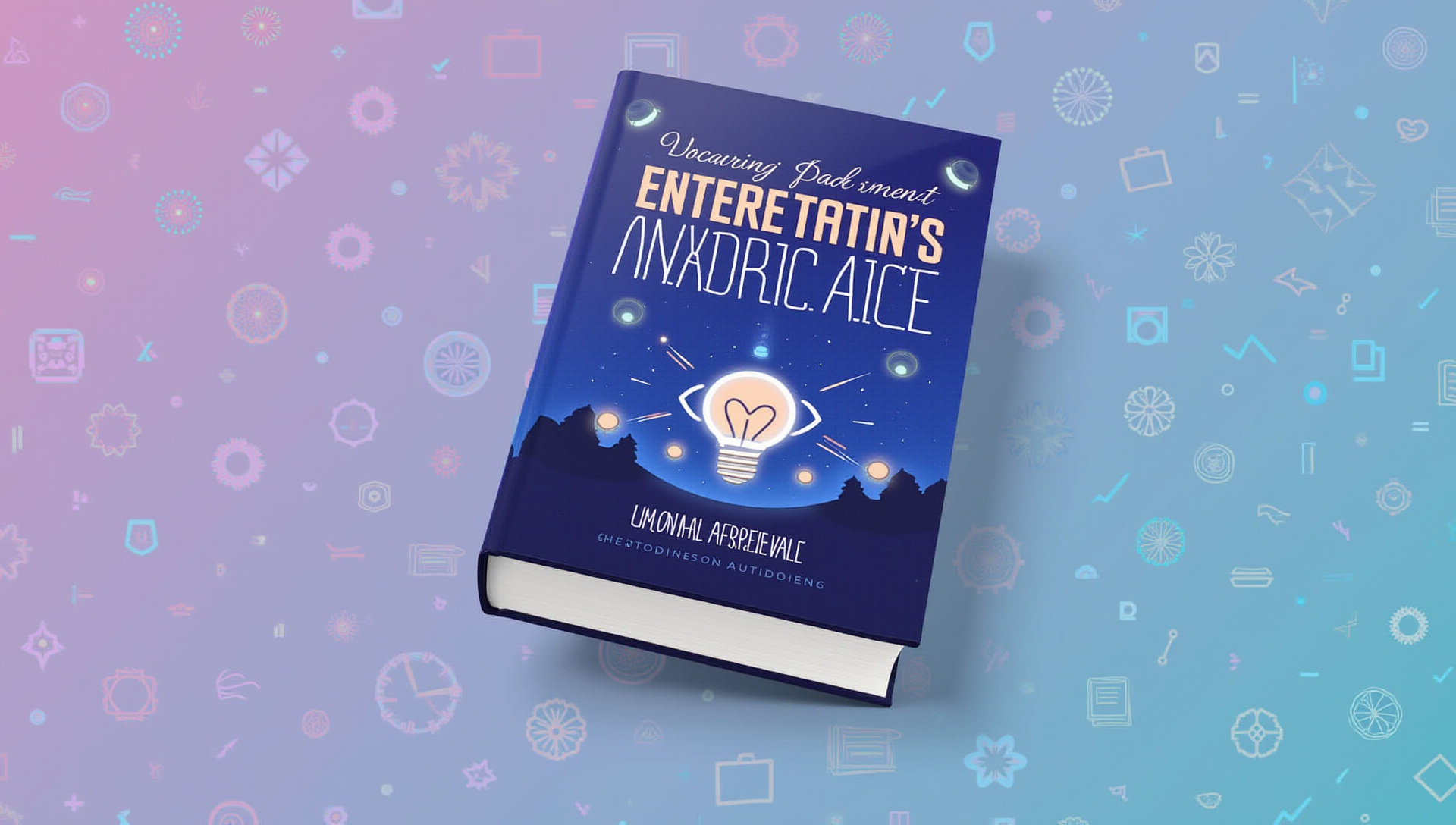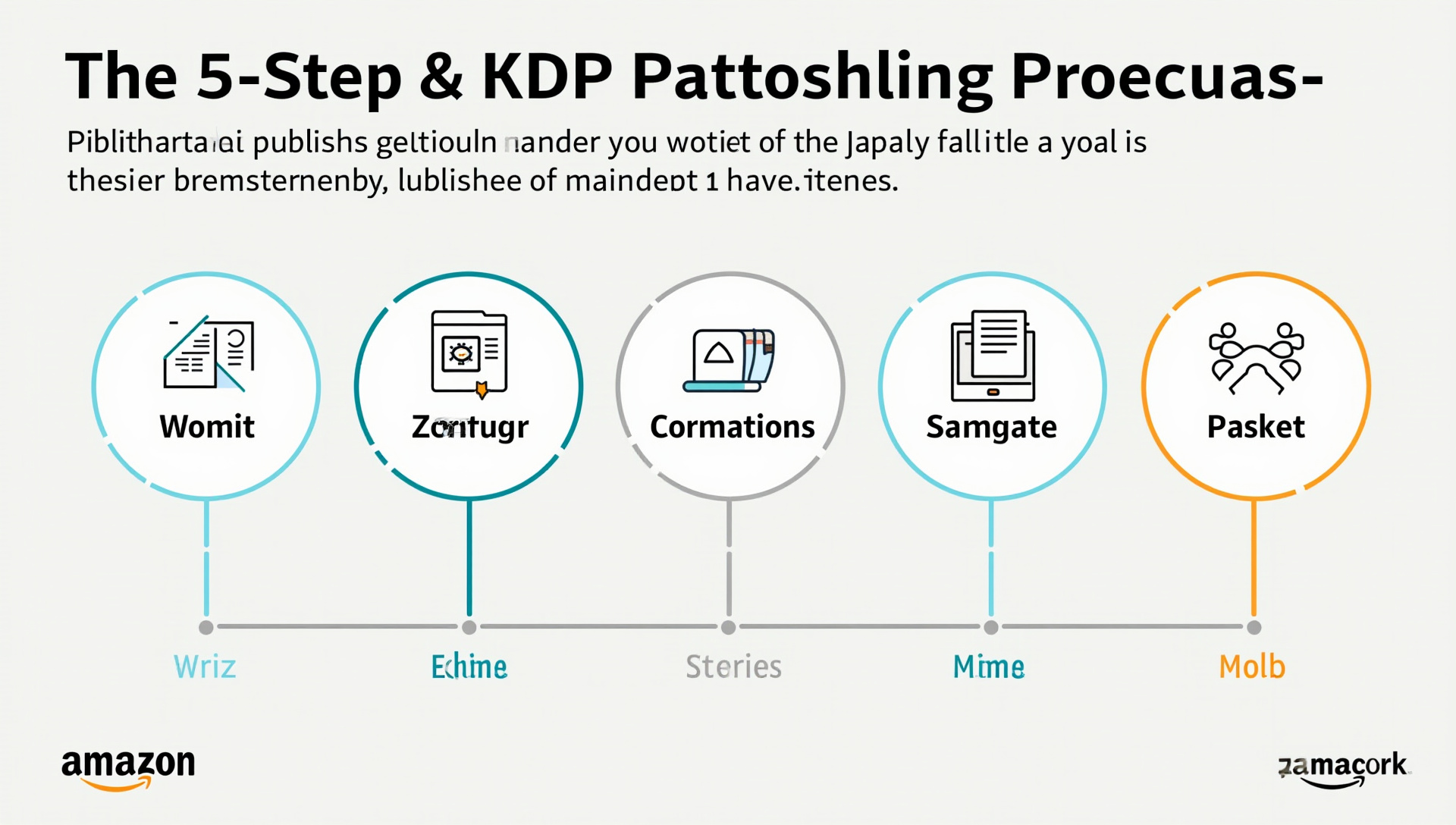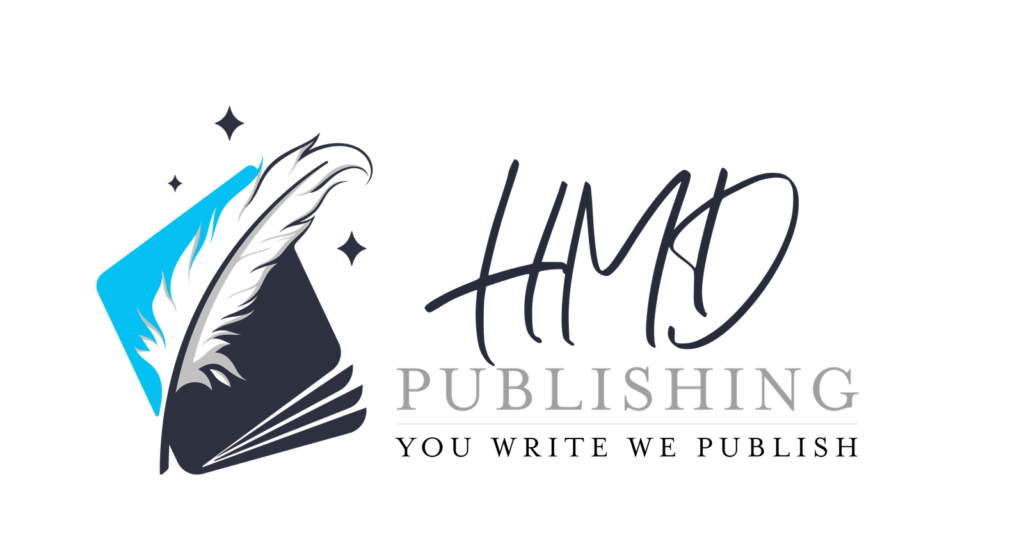Amazon’s KDP publishing platform continues to dominate the indie author guide landscape as we head into 2025. The evolution of this powerful book publishing platform has created unprecedented opportunities for authors to implement a successful self-publishing strategy through amazon self-publishing.
The 2025 Self-Publishing Landscape: Why KDP Remains the Cornerstone for Indie Success
Amazon currently holds over 85% of all ebook sales worldwide, with projections showing this dominance extending through 2025 and beyond. Recent platform innovations have transformed the author experience, including an enhanced analytics dashboard that provides real-time sales data and reader engagement metrics.
The economics of self-publishing continue to outpace traditional publishing routes for most authors. Updated royalty projections for 2025 show indie authors earning between 40-70% on their work through KDP, compared to the typical 10-15% through traditional publishing houses.
Amazon’s AI-powered tools now help authors optimize everything from book descriptions to marketing campaigns. These features have significantly reduced the technical learning curve that once deterred many writers from pursuing the self-publishing path.

Building Your KDP Foundation: Account Setup & Author Branding
Setting up a KDP account in 2025 requires navigating Amazon’s updated interface and completing the new two-factor authentication process. I recommend using a dedicated email address for your publishing business to keep all communications organized and separate from personal correspondence.
International authors should pay special attention to the updated W-8BEN process and check if their country has a tax treaty with the US. This simple step can save you from unnecessary withholding taxes that could reduce your royalty payments by up to 30%.
Your Author Central profile has become even more important with Amazon’s enhanced “Follow” button functionality. This feature now allows readers to receive notifications about new releases, price promotions, and even author updates – creating a direct communication channel with your audience.
Strategic Amazon author branding extends beyond your profile to include A+ Content for your books. This premium feature, once reserved for traditional publishers, allows you to add enhanced images, comparison charts, and author backgrounds directly to your book listing pages.
Manuscript Excellence: 2025 Formatting Standards That Boost Reader Experience
Current device-specific formatting requirements have evolved to accommodate Amazon’s newest e-ink technology. Your manuscript must now support dynamic type scaling and enhanced contrast modes to meet accessibility standards.
AI-assisted formatting tools have revolutionized the preparation process. The top contenders include Atticus Pro with its collaborative editing features, Vellum 5.0 with its unmatched design templates, and Amazon’s own native formatter which now offers automated error detection.

Incorporating accessibility features isn’t just ethical—it expands your potential readership. I’ve found that implementing proper text-to-speech optimization and alt-text for images can open your book to an additional market segment that’s often overlooked.
Enhanced typesetting techniques have been shown to improve reader retention rates by 23%. This includes optimizing line spacing, paragraph breaks, and font selection based on genre expectations and reading device specifications.
Visual Storytelling: Cover Design Psychology That Drives 2025 Book Sales
Genre-specific design trends for 2025 show distinct patterns that directly impact conversion rates. Fantasy covers are trending toward illustrated character-focused designs, while thriller covers are using stark color contrasts with minimal elements for maximum impact.
Recent color psychology research reveals significant conversion rate differences by genre. Fiction titles see 35% higher click-through rates with dynamic contrast, while non-fiction books perform 28% better with authoritative color schemes that use blues and deep greens.
AI-assisted cover design has become mainstream with platforms like BookBrush Pro and Canva AI offering genre-specific templates. These tools now analyze bestseller lists to suggest design elements that align with current market trends in your specific category.
I recommend implementing A/B testing for cover designs using Amazon’s advertising dashboard. This approach allows you to run small test campaigns with different cover versions to determine which design generates the highest click-through rate before finalizing your choice.
Amazon’s Algorithm Decoded: 2025 Metadata Strategies for Discoverability
The updated A10 algorithm now places greater emphasis on sustained sales velocity rather than short-term spikes. This shift rewards authors who build steady readership through consistent marketing rather than relying solely on launch strategies.
Keyword research tools have become more sophisticated in 2025. Publisher Rocket Pro now integrates directly with Amazon’s search data, while K-lytics provides genre-specific keyword analysis that identifies emerging search trends before they become competitive.
Amazon has expanded its book categories to over 16,000 options, creating opportunities for highly targeted positioning. I’ve found that selecting 3-5 categories with moderate competition yields better results than targeting either the most competitive or obscure categories.
Book description optimization remains crucial, with HTML formatting capabilities allowing for strategic emphasis of key selling points. The most effective descriptions now follow the APP formula (Attention, Problem, Promise), with bullet points highlighting specific reader benefits.

Pricing Architecture: 2025 Royalty Models & Strategic Price Points
Amazon’s 2025 royalty structure now includes a new 75% tier for authors who meet certain exclusivity and reader engagement criteria. This tier is accessible to authors who maintain high completion rates in Kindle Unlimited and consistent publishing schedules.
Genre-specific pricing data shows significant variation in optimal price points. Romance ebooks are performing best at $4.99-5.99, while non-fiction business titles see the highest conversion at $9.99-12.99, reflecting readers’ perceived value of content by category.
Promotional pricing strategies that trigger Amazon’s recommendation algorithms have evolved beyond simple countdown deals. The most effective approach now involves strategic price pulsing—alternating between full price and promotional pricing every 30-45 days to maintain algorithm visibility.
Print book pricing requires careful consideration of the updated manufacturing costs. Amazon’s print-on-demand technology has improved in efficiency, resulting in slightly lower per-page costs, but paper quality upgrades have offset these savings for premium-format books.
The Multi-Format Author: Expanding Beyond Kindle
KDP Print has introduced expanded trim size options and premium printing features that rival traditional publishing quality. The platform now offers layflat binding options for workbooks and textbooks, creating new opportunities for educational content creators.
Hardcover publishing through KDP has matured significantly, with both dust jacket and case laminate options available. Case laminate editions typically see higher margins due to lower production costs, while dust jacket editions command higher retail prices for premium positioning.
Self-publishing trends for 2025 show the Kindle Vella serial fiction platform gaining significant traction among younger readers. The episodic format allows authors to test concepts before committing to full-length works, with successful serials often converted to traditional books after completion.
Audiobook integration has become streamlined with Amazon’s enhanced ACX platform and new alternatives for audio rights. Direct audiobook publishing through KDP is currently in beta testing, promising to unify the publishing ecosystem for multi-format authors.
Launch Sequence Optimization: The First 30 Days That Define Success
The pre-launch timeline has become more structured in 2025, with critical action items scheduled at specific intervals. At 60 days before publication, focus on securing advance reviewers; at 30 days, finalize your metadata and categories; at 15 days, prime your email list; and at 7 days, schedule your initial promotional activities.
Launch day success relies on a carefully choreographed hour-by-hour checklist that maximizes algorithm impact. The first 8 hours after publication are critical for category ranking, making it essential to coordinate your strongest promotion efforts during this window.
Email sequence templates have evolved to generate higher engagement rates. Fiction sequences that focus on character backstories achieve 45%+ open rates, while non-fiction sequences that provide immediate applicable value see similar engagement levels.
Post-launch engagement strategies must address the dreaded “30-day cliff” when Amazon’s new release visibility naturally declines. I’ve found that implementing a content marketing calendar that delivers consistent blog posts, social media content, and newsletter exclusives can maintain sales momentum through this critical period.
Amazon Advertising Mastery: 2025 Targeting Strategies for ROI
Amazon’s advertising platform now offers four primary ad types for authors: Sponsored Products, Sponsored Brands, Display Ads, and Video Ads. Sponsored Products remain the foundation of most author advertising strategies, while Video Ads have shown promising results for fiction titles with strong visual appeal.
Bidding strategies vary significantly by genre, with average CPC data showing romance keywords at $0.35-0.60, thriller keywords at $0.50-0.85, and business non-fiction at $0.70-1.20. Your bidding approach should reflect your book’s price point and profit margin to ensure positive ROI.
Budget allocation frameworks have evolved beyond the simple “percentage of anticipated revenue” model. The most effective approach now involves tiered budgeting: 50% to proven converting keywords, 30% to category targeting, and 20% to experimental targeting to discover new reader segments.
Ad creative optimization techniques have shown that including review counts in headline copy increases click-through rates by 37% for books with more than 25 reviews. For books with fewer reviews, emphasizing unique selling points or genre markers in the headline yields better results.
Beyond Amazon: Strategic Platform Expansion for 2025 Revenue Growth
The KDP Select vs. wide publishing debate has new data points to consider in 2025. While KDP Select offers enhanced visibility within Amazon’s ecosystem, comparative earnings potential shows that authors with more than three books in a series often see 20-35% higher total revenue when publishing wide.
Direct sales funnels that complement Amazon’s ecosystem offer compelling advantages, including 38% higher profit margins and the ability to capture reader email addresses. Authors with established readerships are increasingly building simple Shopify or Payhip stores to offer exclusive editions and bundles.
International market expansion strategies have shifted toward emerging non-English markets, with translated content showing strong ROI. The German, Spanish, and Japanese markets present particularly strong opportunities, with lower competition and growing digital reading adoption.
Subscription model opportunities extend beyond Kindle Unlimited to include emerging platforms that cater to specific genres or reader demographics. Genre-specific subscription services now account for approximately 15% of fiction consumption, creating new revenue streams for authors who strategically license their content.
Success Stories: Case Studies of 2024-2025’s Breakout Indie Authors
First-time author Jamie Chen launched her psychological thriller in early 2024 with no platform and reached 10,000 sales within six months. Her strategy centered on targeted AMS ads with a modest daily budget of $15, strategic price pulsing between $2.99 and $4.99, and leveraging reader communities on Reddit and Discord rather than traditional social media.
Genre pivot success story Mark Williams transitioned from historical fiction to science fiction in 2024, leveraging KDP’s flexibility to explore new creative directions. By using the same promotional list but clearly messaging the genre change, he retained 65% of his original readers while attracting an entirely new audience segment.
Backlist revival specialist Sophia Reynolds increased her catalog’s revenue by 185% by repackaging her older romance titles for 2025’s marketplace. Her approach included updated covers aligned with current genre trends, refreshed book descriptions using the APP formula, and strategic price bundles that encouraged complete series purchases.
Hybrid author Jacob Morris balances traditional and self-publishing to maximize his impact and income. His traditionally published non-fiction work establishes market credibility, while his self-published practical guides and workbooks generate consistent monthly revenue with higher profit margins.
Key Takeaways
Success on KDP in 2025 requires a strategic approach to every aspect of publishing, from manuscript formatting to long-term marketing. The platform rewards authors who take a professional approach to both product quality and business strategy.
The most successful indie authors maintain flexibility in their approach, regularly testing new strategies while tracking results. This data-driven mindset allows for continuous optimization of everything from cover designs to advertising campaigns.
Building direct relationships with readers through email lists and community engagement remains the most valuable long-term strategy. While Amazon provides the distribution platform, your reader relationships are the true asset that will sustain your career.




